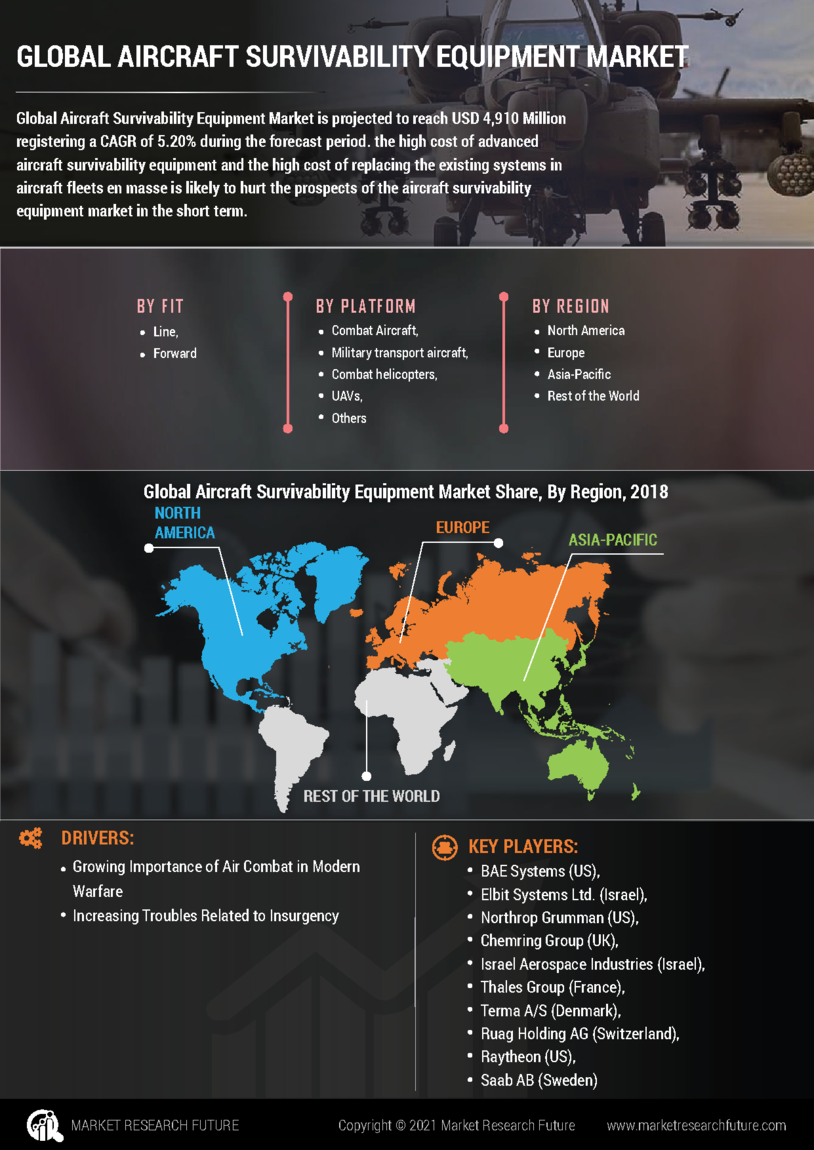The Aircraft Survivability Equipment Market is characterized by intense competition among key players who are focused on enhancing the safety and survivability of aircraft in hostile environments. This market includes a diverse range of products and services aimed at detecting, counteracting, and mitigating threats to aircraft, including sophisticated systems for electronic warfare, missile defense ,and protective measures against physical and cyber threats.
As nations prioritize defense spending and seek advanced technologies to strengthen their military capabilities, the demand for aircraft survivability equipment is expected to witness significant growth. The competitive landscape is influenced by rapid technological advancements, partnerships and collaborations, and a robust focus on research and development.
Companies are strategically positioning themselves to capture a larger market share by innovating and providing solutions that meet the evolving needs of military and commercial aviation.
Boeing is one of the prominent players in the Aircraft Survivability Equipment Market, leveraging its extensive experience in aerospace and defense. The company has developed a strong portfolio of survivability solutions, which are integrated into its wide range of military and commercial aircraft.
Boeing's strengths in this market include its advanced capabilities in designing and manufacturing electronic warfare systems, stealth technology, and advanced sensors that enhance aircraft survivability. Additionally, Boeing benefits from strong relationships with various government agencies and defense contractors, allowing for collaborative projects that further enhance its offerings in aircraft survivability.
The company is also recognized for its commitment to innovative research and development, which plays a crucial role in keeping its aircraft equipped with the latest survivability features.
General Dynamics is a significant competitor in the Aircraft Survivability Equipment Market, known for its comprehensive defense solutions and advanced technological offerings. The company has established itself as a leader in developing systems that improve the survivability of military platforms through innovative approaches to electronic warfare and sensor capabilities.
General Dynamics excels in integrating survivability solutions into aircraft systems and is heavily invested in research and development to stay ahead of industry trends and customer needs. With its extensive experience in working with government contracts and military organizations, General Dynamics has successfully positioned itself as a reliable partner for defense solutions, reinforcing its presence in the aircraft survivability segment.
The company's strong emphasis on technology advancement and comprehensive understanding of the defense landscape enhance its competitive positioning within the market.


















Leave a Comment